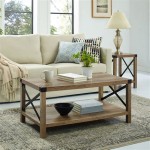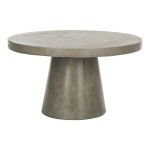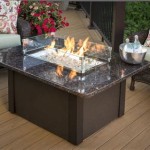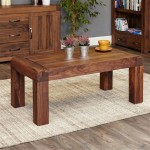Modern Center Table Design For Living Room
The living room center table, often referred to as a coffee table, serves as a focal point and a functional anchor within the space. Beyond its aesthetic appeal, it provides a surface for drinks, books, remote controls, and decorative items, contributing to both the visual harmony and the practical usability of the room. Modern center table designs have evolved significantly, embracing clean lines, innovative materials, and a minimalist philosophy. This article explores the key aspects of modern center table design, highlighting various styles, materials, and considerations for selecting the perfect piece to complement a contemporary living room.
Modern design emphasizes simplicity and functionality, which is reflected in the clean, uncluttered aesthetic of contemporary center tables. Gone are the ornate carvings and heavy detailing of traditional styles. Instead, modern tables favor geometric shapes, smooth surfaces, and a restrained use of embellishments. This approach allows the table to blend seamlessly with other modern furnishings, creating a cohesive and sophisticated look.
The selection of a suitable center table should be approached with careful consideration of the room's overall design, the available space, and the intended use of the table. Factors such as size, shape, material, and style all play a crucial role in determining the table's suitability. A well-chosen center table can enhance the room's aesthetic appeal, improve its functionality, and provide a comfortable and inviting atmosphere.
Key Considerations for Choosing a Modern Center Table
Selecting the right modern center table for a living room involves a multi-faceted approach, considering both aesthetic preferences and practical needs. An informed decision requires careful assessment of the room's dimensions, the existing decor, and the anticipated usage of the table. The following key points provide a framework for navigating the selection process.
1. Size and Proportion: The size of the center table should be proportionate to the size of the living room and the surrounding furniture. A table that is too large can overwhelm the space, making it feel cramped and cluttered. Conversely, a table that is too small may appear insignificant and fail to adequately serve its intended purpose. As a general guideline, the center table should be approximately two-thirds the length of the sofa and positioned 12-18 inches away from the sofa to allow for comfortable legroom. The height of the table should also be considered in relation to the sofa's seat height; ideally, the table should be at the same height or slightly lower than the sofa seat. This ensures easy access to items on the table and prevents the table from obstructing the view across the room.
The shape of the center table can also influence the perception of space. Round or oval tables can soften angular lines and create a more balanced feel in a room with predominantly square or rectangular furniture. Square or rectangular tables, on the other hand, can reinforce the geometric aesthetic of a modern living room and provide a larger surface area for placing items. When choosing a shape, consider the flow of traffic through the room and ensure that the table does not impede movement.
2. Material and Texture: The choice of material significantly impacts the overall aesthetic and durability of the center table. Modern center tables are available in a wide range of materials, each with its unique characteristics and visual appeal. Common materials include wood, glass, metal, stone, and acrylic. The material should complement the existing decor and reflect the desired style of the living room.
Wood is a classic and versatile choice, offering warmth and natural beauty. Different types of wood, such as oak, walnut, and maple, can create distinct looks. Solid wood tables are durable and long-lasting, while veneer tables offer a more affordable option. Glass tables provide a sleek and modern look, creating a sense of openness and lightness. Tempered glass is a strong and safe option for center tables. Metal tables, often made of stainless steel or wrought iron, add a touch of industrial chic to the living room. Metal can be combined with other materials, such as wood or glass, to create interesting and visually appealing designs.
Stone tables, such as marble or granite, exude elegance and sophistication. These tables are durable and heat-resistant, making them suitable for serving hot beverages. Acrylic tables are a modern and contemporary choice, offering transparency and a lightweight feel. Acrylic can be molded into various shapes and colors, providing versatility in design.
The texture of the center table can also contribute to the overall aesthetic of the room. Smooth surfaces create a sleek and modern look, while textured surfaces add visual interest and tactile appeal. Consider the tactile qualities of the material and how it feels to the touch.
3. Style and Functionality: Modern center tables are available in a variety of styles, ranging from minimalist and Scandinavian to industrial and mid-century modern. The style of the table should complement the existing decor and reflect the overall aesthetic of the living room. Minimalist tables are characterized by clean lines, simple shapes, and a lack of ornamentation. These tables are often made of wood, glass, or metal and are designed to blend seamlessly with other modern furnishings. Scandinavian tables emphasize natural materials, light colors, and functional design. These tables often feature tapered legs and a simple, uncluttered aesthetic. Industrial tables combine raw materials, such as wood and metal, to create a rugged and utilitarian look. These tables often feature exposed hardware and a distressed finish. Mid-century modern tables are characterized by clean lines, organic shapes, and a focus on functionality. These tables often feature tapered legs and a warm, inviting aesthetic.
The functionality of the center table should also be considered. Some tables offer additional storage space, such as drawers or shelves, for storing books, magazines, and remote controls. Lift-top tables can be raised to provide a convenient surface for working or eating. Nesting tables offer versatility and can be easily moved around the room as needed. Consider the specific needs of the household and choose a table that provides the optimal level of functionality.
Exploring Different Modern Center Table Styles
The landscape of modern center table design is diverse, offering a multitude of styles to suit varying aesthetic preferences and functional requirements. Understanding the nuances of each style allows for a more informed selection process, ensuring that the chosen table harmonizes with the overall design of the living room. The following sections explore some of the most prominent modern center table styles.
Minimalist Center Tables: Minimalist center tables embody the principles of simplicity and functionality. These tables are characterized by clean lines, geometric shapes, and a lack of ornamentation. The focus is on essential forms and materials, creating a sleek and uncluttered aesthetic. Minimalist tables often feature a single, solid surface supported by simple legs or a pedestal base. Materials commonly used include wood, glass, and metal. The color palette is typically neutral, with shades of white, gray, and black dominating the spectrum. Minimalist tables are ideal for modern living rooms that prioritize a clean, uncluttered look.
Scandinavian Center Tables: Scandinavian center tables emphasize natural materials, light colors, and functional design. These tables often feature tapered legs, a simple, uncluttered aesthetic, and a focus on warmth and comfort. Wood is the primary material used in Scandinavian tables, often in light tones such as birch or ash. The tables may also incorporate elements of glass or metal. Scandinavian tables are designed to create a cozy and inviting atmosphere, reflecting the Nordic emphasis on hygge, a concept that encompasses comfort, warmth, and well-being.
Industrial Center Tables: Industrial center tables combine raw materials, such as wood and metal, to create a rugged and utilitarian look. These tables often feature exposed hardware, a distressed finish, and a focus on functionality. Metal is a key element in industrial tables, often in the form of steel, iron, or aluminum. Wood is used to provide warmth and contrast to the metal elements. Industrial tables are inspired by the aesthetics of factories and warehouses, creating a unique and edgy look for the living room.
Mid-Century Modern Center Tables: Mid-century modern center tables are characterized by clean lines, organic shapes, and a focus on functionality. These tables often feature tapered legs, a warm, inviting aesthetic, and a combination of natural and man-made materials. Wood is a prominent material in mid-century modern tables, often in rich tones such as walnut or teak. The tables may also incorporate elements of glass, metal, or plastic. Mid-century modern tables reflect the design sensibilities of the 1950s and 1960s, creating a timeless and sophisticated look for the living room.
Materials Used in Modern Center Table Design
The selection of materials is a critical aspect of modern center table design, influencing both the aesthetic appeal and the durability of the piece. Different materials offer unique visual and tactile qualities, allowing for a wide range of design possibilities. The following sections delve into the characteristics of some of the most commonly used materials in modern center table design.
Wood: Wood is a classic and versatile material that has been used in furniture making for centuries. It offers warmth, natural beauty, and a wide range of aesthetic possibilities. Different types of wood, such as oak, walnut, maple, and birch, offer distinct grain patterns, colors, and textures. Solid wood tables are durable and long-lasting, while veneer tables offer a more affordable option. Wood can be finished in a variety of ways, including staining, painting, and sealing, to create different looks. Wooden center tables are suitable for a variety of modern styles, from minimalist to Scandinavian to mid-century modern.
Glass: Glass tables provide a sleek and modern look, creating a sense of openness and lightness. Tempered glass is a strong and safe option for center tables, resistant to shattering and cracking. Glass can be clear, tinted, or frosted, offering different levels of privacy and visual appeal. Glass tables are often combined with metal or wood to create interesting and visually appealing designs. Glass center tables are ideal for modern living rooms that prioritize a clean, minimalist aesthetic.
Metal: Metal tables, often made of stainless steel, iron, or aluminum, add a touch of industrial chic to the living room. Metal is a durable and versatile material that can be shaped into a variety of forms. Metal can be combined with other materials, such as wood or glass, to create interesting and visually appealing designs. Metal center tables are suitable for a variety of modern styles, from industrial to minimalist. The finish of the metal can be polished, brushed, or powder-coated to create different looks.
Stone: Stone tables, such as marble, granite, or slate, exude elegance and sophistication. These tables are durable, heat-resistant, and provide a unique natural texture. Stone tables are often used as a focal point in the living room, adding a touch of luxury and refinement. Stone center tables are suitable for a variety of modern styles, from minimalist to contemporary. The veining and patterns of the stone contribute to its individual character.
Acrylic: Acrylic tables are a modern and contemporary choice, offering transparency and a lightweight feel. Acrylic can be molded into various shapes and colors, providing versatility in design. Acrylic tables are often used in minimalist or futuristic living rooms, adding a touch of modern flair. Acrylic is a durable and scratch-resistant material that is easy to clean and maintain.

100 Coffee Table Design Inspiration The Architects Diary Modern Centre Living Room Sofa

Center Tables To Liven Up Your Living Room Artyz

50 Modern Center Tables For A Luxury Living Room

50 Modern Center Tables For A Luxury Living Room Centre Table Designs

Contemporary Rectangle Design Living Room Furniture Modern High Gloss Surface Cocktail Table Center For Sofa Or Upholstered Chairs 45 2 25 5 13 7in Black Com

Center Tables To Liven Up Your Living Room Artyz

50 Luxury Center Tables You Should Look Out For

7 Modern Wooden Center Table For Your Home Designcafe

Living Room Modern Center Table Furniture Mart

87 Best Centre Table Living Room Ideas Coffee Design
Related Posts








